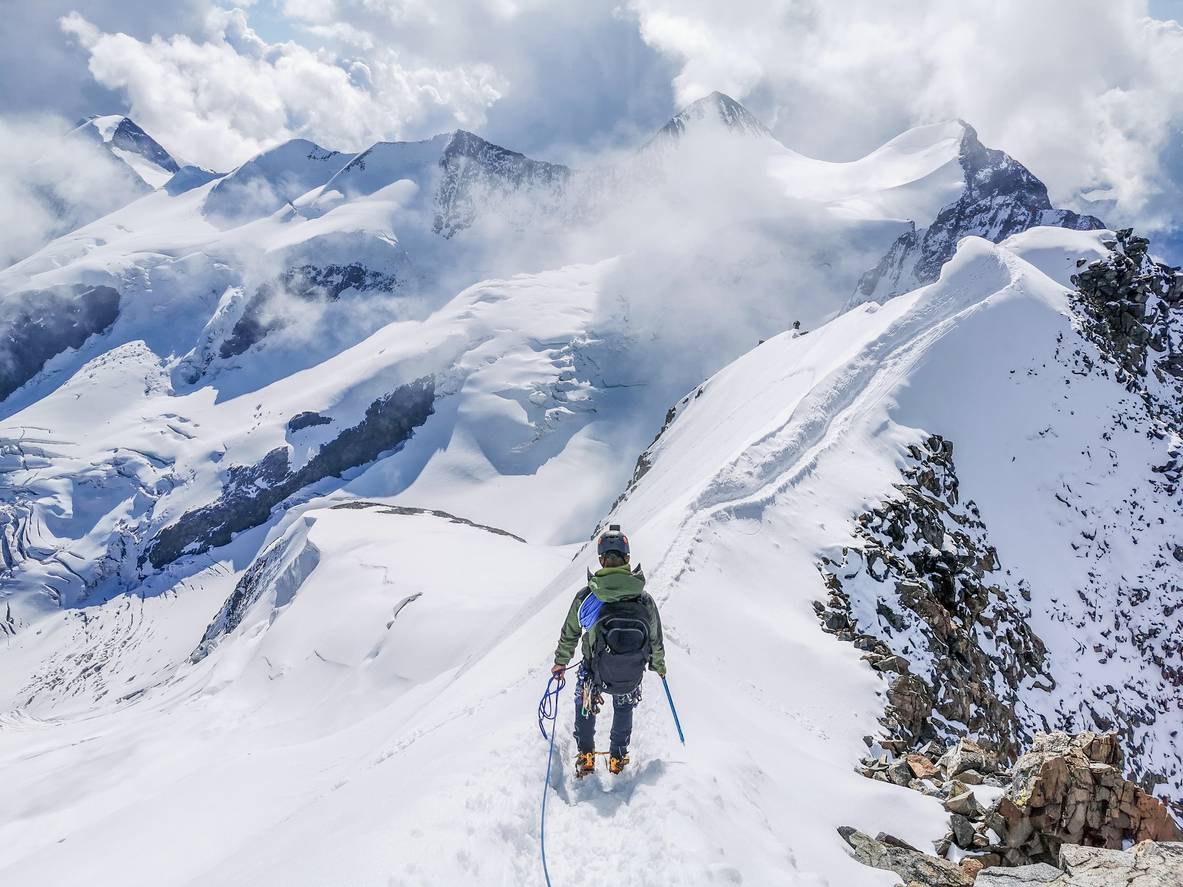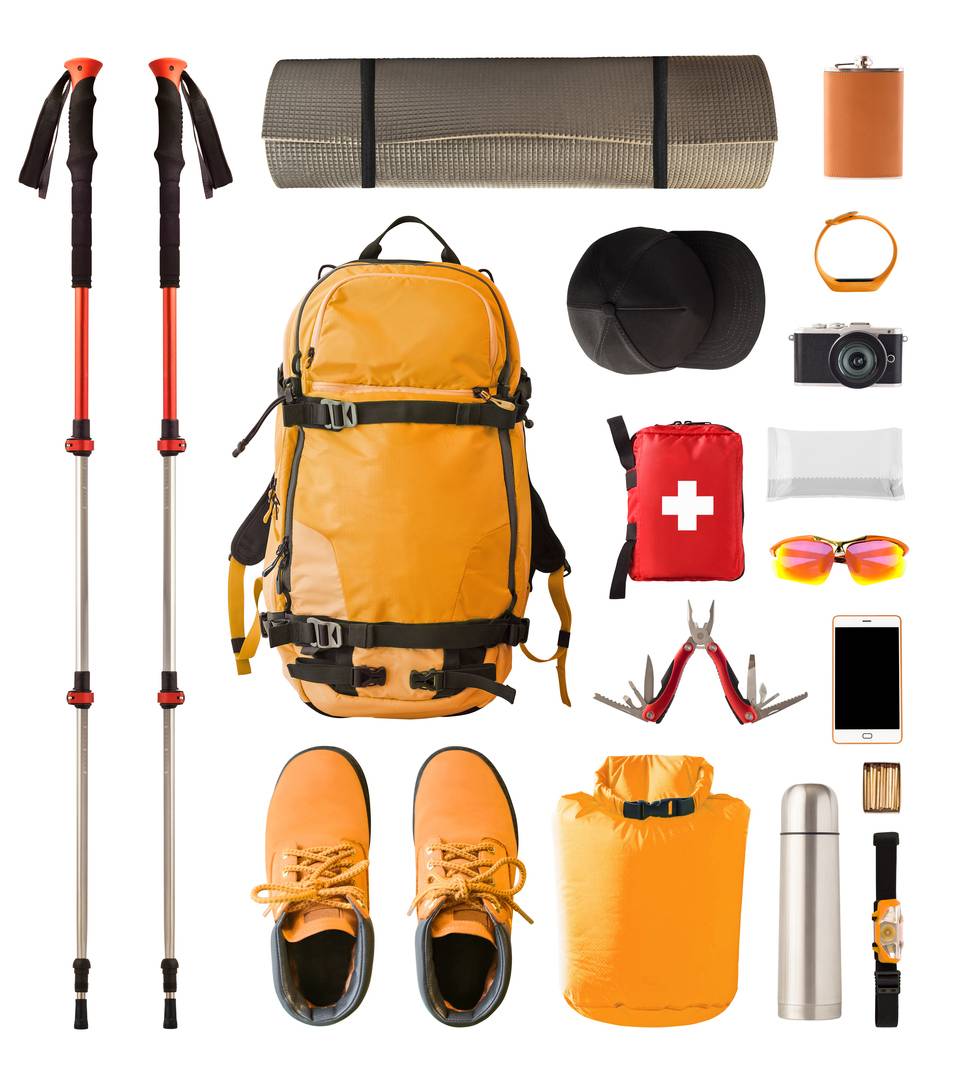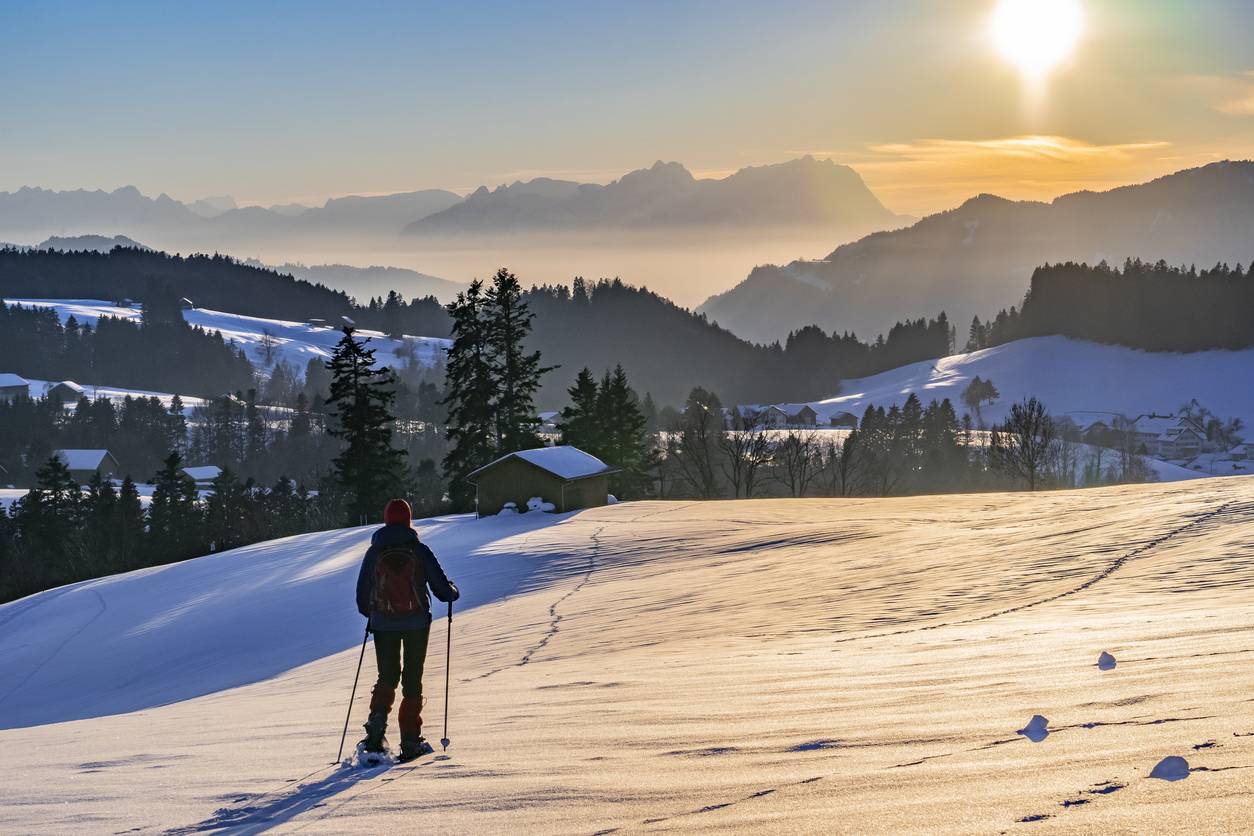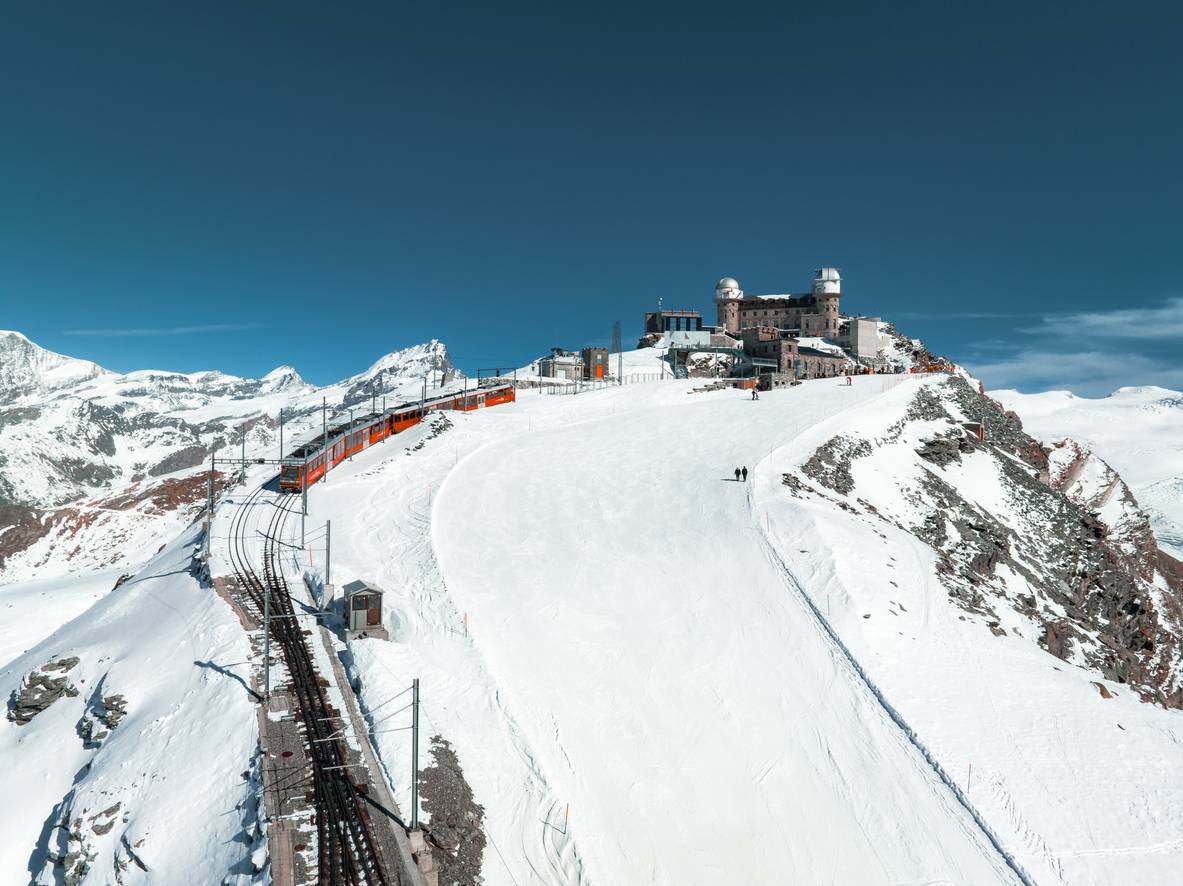Snow hiking in the Swiss Alps: What do I need to bear in mind? Learn useful tips & tricks for unforgettable hikes here.
Holidays "at home" and yet so special: Especially in winter, our Swiss Alps attract visitors with beautiful snowy panoramas and countless activities.
Table of contents:

Trees draped in white, glistening ice on frozen mountain lakes and the pleasant crunching sound of fresh snow under your feet: Winter hikes in Switzerland have their very special charm and allow nature to appear in an enchanting new way. Fortunately, you don't have to travel far in Switzerland to experience this. But you should prepare yourself.
A perfect day in the snow-covered mountains starts, for example, with a hearty breakfast that provides enough energy for the upcoming long hike in the snow. In the afternoon you can let yourself be pampered in the spa and in the evening you will be rewarded with a hearty, creamy cheese fondue in good company. And the day after? The leisure activities in the Swiss mountains are practically endless. Unfortunately, budgets usually are not. It's so much nicer if you can save money on the hotel. And are therefore more flexible for your leisure activities.
Equipment
• Rescue blanket
• Torch
• Lighter or matches
• Fully charged mobile phone & power bank
• Whistle (to draw attention to yourself in an emergency)
• In avalanche prone areas, avalanche probe, shovel and avalanche transceiver (beacon)
The right footwear
The right footwear is at least as important in winter as it is in summer. However, most hiking shoes can also be worn in winter, as they are very stable and waterproof anyway. In order to offer sufficient stability for the foot, they should be ankle-high and of course suitable for snow. Good gaiters also keep your feet dry. Poles with large tips prevent the hiking pole from sinking too deep in the snow.
A well planned hiking route
Planning the hiking route is particularly important in winter. With temperatures around freezing and uncertain weather conditions, you should be prepared for all situations. And that often means: It is better to plan more time and not choose the routes that are too demanding. You should also keep in mind that the days are shorter in winter and it gets dark faster. So: Be generous with your resources of time and fitness. This way you won't get into an emergency situation unnecessarily and can enjoy the trip to the fullest.

Communication and maps
You usually have them with you anyway, so you should take them with you on the mountain: Travel card (of course!), cash, identity card, health insurance card, Alpine Club membership card (if you have one), possibly a camera and binoculars, headlamp. Inform someone of your planned route and when you should be back.
Emergency equipment
In the mountains you should be prepared for everything and be able to take care of yourself, at least for the time being, should something happen. That's why you must have a well-organised emergency pack:
Medication & Sunscreen
• First aid kit
• Plaster / Bandage
• Handkerchiefs
• Medication & Painkillers
• Disinfectants
• Sunscreen / lip protection

Planning and route selection
Before the hike, find out about the weather conditions, avalanche danger and snow conditions in the region. Choose an appropriate route that suits your fitness and experience level. Make sure that the hiking trails and mountain railways are open in winter. Use maps and apps for orientation.
Basic skills
Acquire basic knowledge of using maps and compass as well as avalanche awareness. If you are travelling in higher mountain regions, it is advisable to take part in a winter hiking or avalanche course.
Time management
Plan enough time for the hike. In winter you usually travel slower. Also keep in mind that the days are shorter in winter and you should plan your hike accordingly to avoid walking in the dark.
Respect nature
Be considerate of wildlife and stay on the designated trails. Be aware of wildlife sanctuaries and restricted areas.
Flexibility
Be prepared to change plans or cancel the trek if weather conditions or snow conditions worsen. Safety first!
Food and drink
Pack enough food and drinks to stay strong during the hike. It is particularly important to stay hydrated during the winter months, as the cold can reduce thirst.

Planning and preparation
Research the hiking trails and choose a suitable route according to your fitness level and experience. Find out about the weather forecast, snow conditions and avalanche risk in the region.
Navigation
Bring a map, compass and GPS device or smartphone with a navigation app. It's important to be able to determine your position and find your way back if you lose your way.
Avalanche risk
Pay attention to the current avalanche situation and avoid potentially dangerous areas. If the risk of avalanches is high, you should postpone your hike or choose an alternative route.
Adaptability
Be prepared to change your plans if conditions deteriorate or you feel unwell during the trek. It is better to abort a trek and return safely than to take unnecessary risks.
Respect the environment
Stay on the marked trails to protect nature and reduce the chance of getting lost.
This website uses cookies. By using our website, you agree to the use of cookies. Click here to find out more about the type of cookies this site uses and how to change your setting.